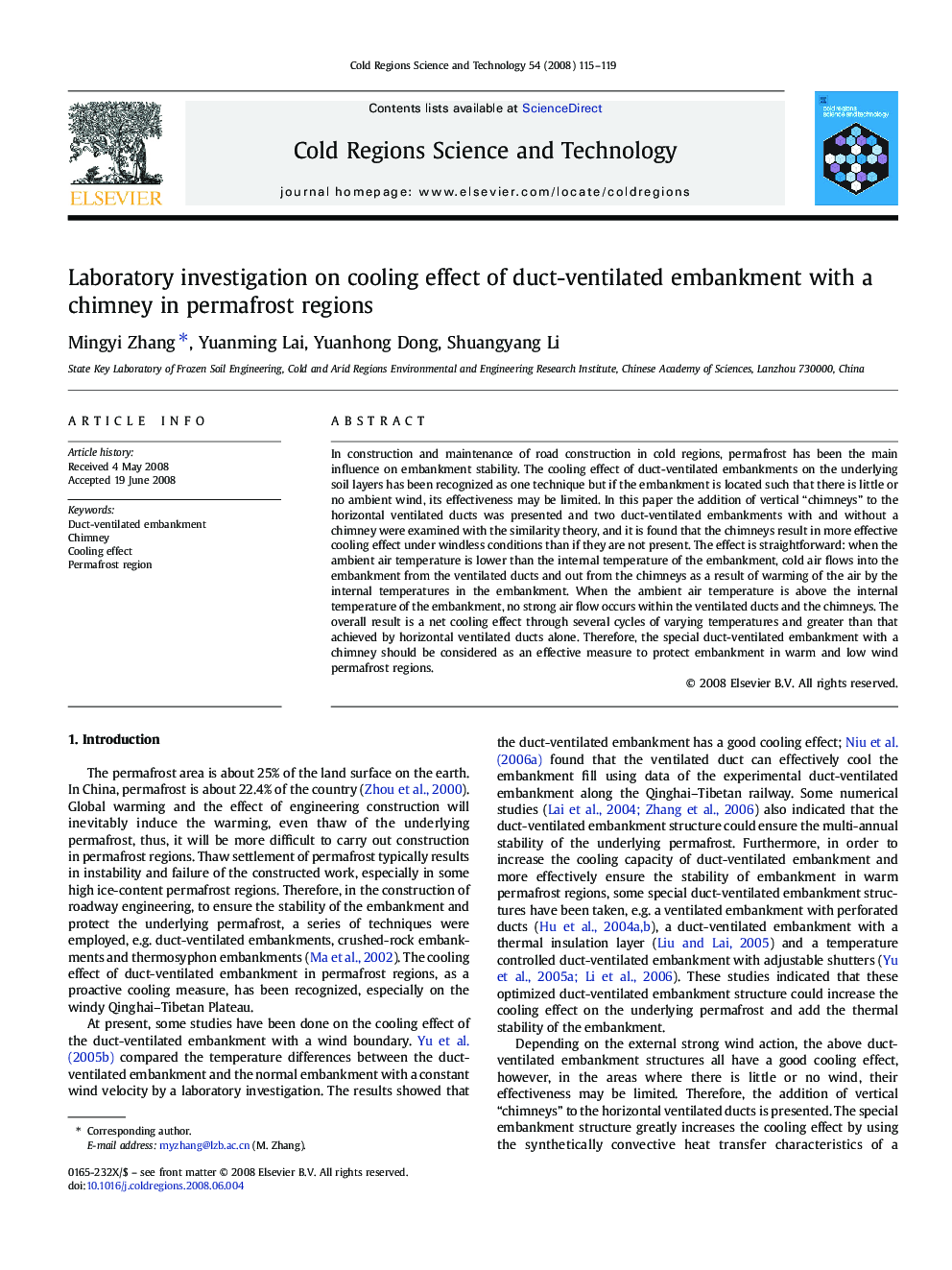| Article ID | Journal | Published Year | Pages | File Type |
|---|---|---|---|---|
| 4676599 | Cold Regions Science and Technology | 2008 | 5 Pages |
In construction and maintenance of road construction in cold regions, permafrost has been the main influence on embankment stability. The cooling effect of duct-ventilated embankments on the underlying soil layers has been recognized as one technique but if the embankment is located such that there is little or no ambient wind, its effectiveness may be limited. In this paper the addition of vertical “chimneys” to the horizontal ventilated ducts was presented and two duct-ventilated embankments with and without a chimney were examined with the similarity theory, and it is found that the chimneys result in more effective cooling effect under windless conditions than if they are not present. The effect is straightforward: when the ambient air temperature is lower than the internal temperature of the embankment, cold air flows into the embankment from the ventilated ducts and out from the chimneys as a result of warming of the air by the internal temperatures in the embankment. When the ambient air temperature is above the internal temperature of the embankment, no strong air flow occurs within the ventilated ducts and the chimneys. The overall result is a net cooling effect through several cycles of varying temperatures and greater than that achieved by horizontal ventilated ducts alone. Therefore, the special duct-ventilated embankment with a chimney should be considered as an effective measure to protect embankment in warm and low wind permafrost regions.
